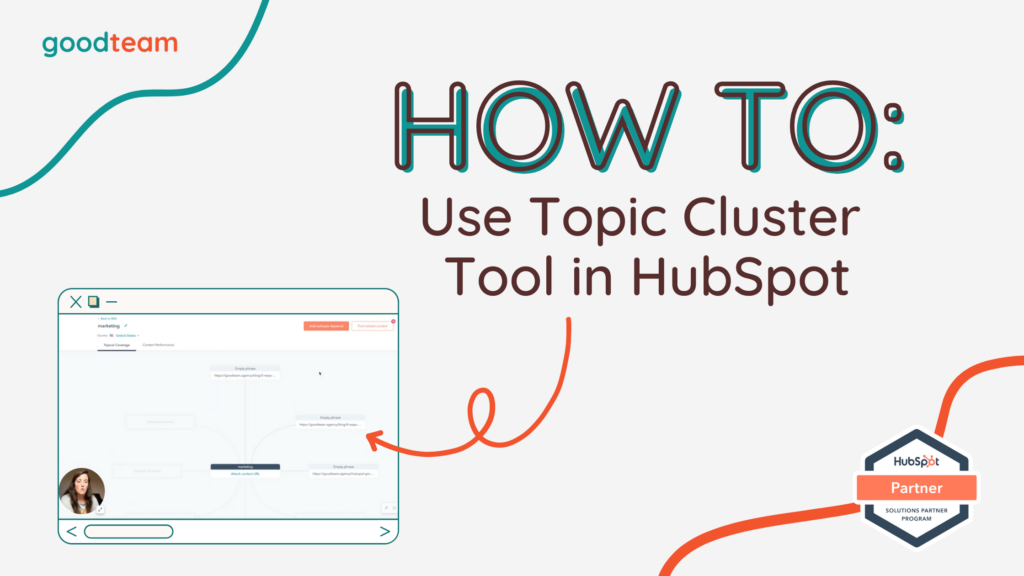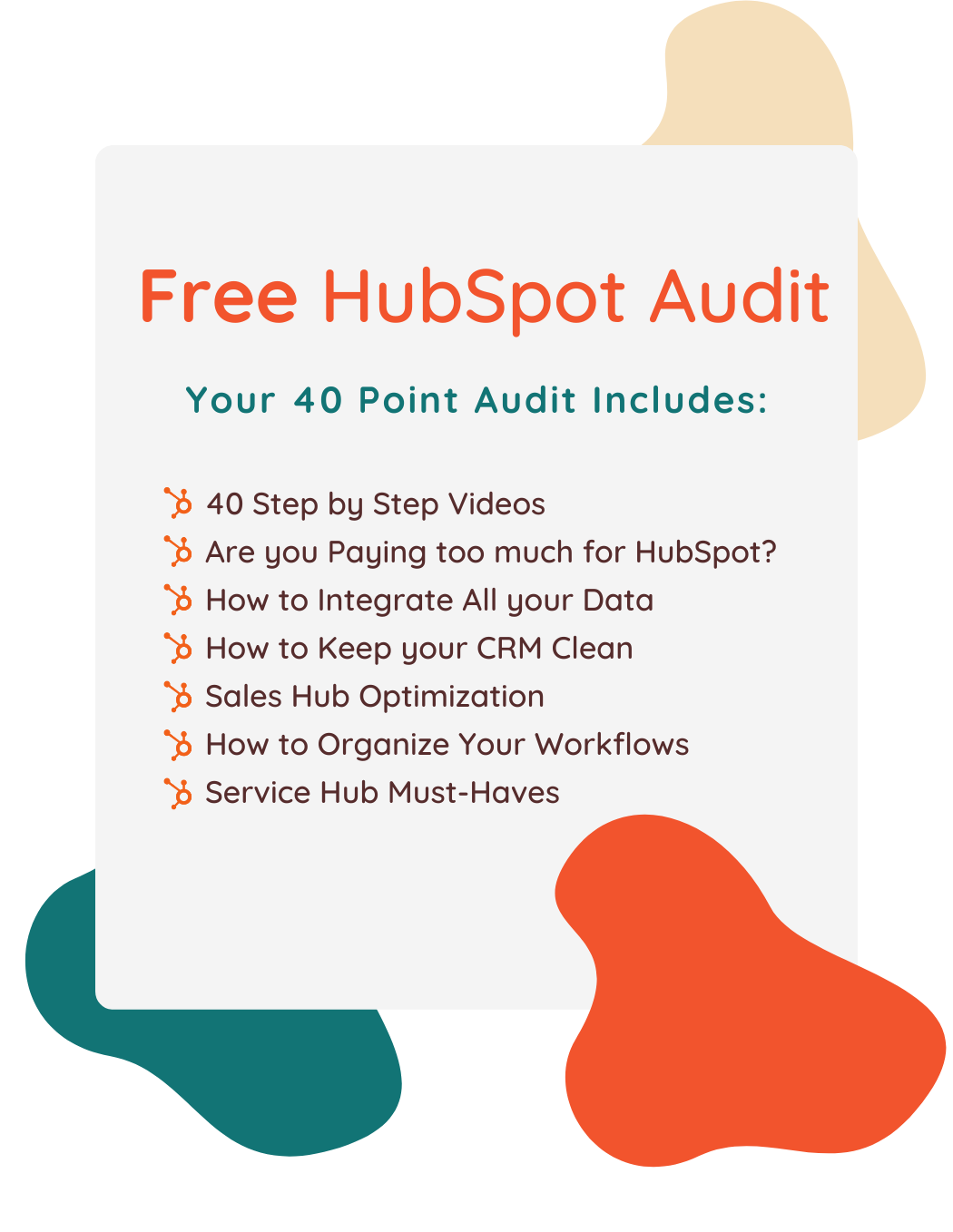How to Organize and Track Keywords in HubSpot

Written by
Good Team
Created on
June 30, 2022
Organize and Track your Keywords in HubSpot
That’s it! Now you know how to organize and track keywords in HubSpot!
What is Good Team?
Good Team is a HubSpot Partner Agency, as a Certified Solutions Partner with HubSpot we are committed to helping companies grow better. We do that in many ways: Management, Projects, Support, or Resources.
Fill out the form below to access our 40-point DIY HubSpot Audit with Videos!
If you aren’t able to watch the video on How to Organize and Track Keywords in HubSpot here are the captions:
Hello this is Frances
from good team.
And I’m going to show you
how to use the topic cluster tool in HubSpot.
This goes along
with another video that we made on using the topic
research tool that HubSpot offers for SEO.
This is a great tool to
organize your content as well as do a
little bit of research before you start
writing such content.
So let’s say, you
know, you are going to be writing about marketing. That’s your main piece of
content, your pillar page.
What HubSpot has created
is a topic cluster, which
is exactly what it looks like.
It sounds like it’s just a
cluster of topics that point back to your main pillar page.
So in this example, we
are using marketing.
Let’s say we’ve got a we’ve
got a blog or a lead magnet or a product page
that is marketing. And we want to start
writing content
that’s going to push people
back to that pillar page.
So what this will do is help
you understand what content does really well and pulls people
to that page and maybe what content you should recycle
or add a different piece to.
So there are two
things that you can do, three things you can do here.
First of all, you can
monitor the performance
of your content. Once you’ve added a pillar
page and some subtopics, then that data will
start to show up here.
You will need a tracking
code and in some cases,
you may need to be
using a HubSpot blog or have an attribution code
connected to your site.
So just note on that. If you know you’ve
already written content, what will happen is you can
find related content that are keyword is marketing.
So they’re scanning that
and they said, oh, you’ve got seven pieces of
content on marketing, so why don’t you go ahead
and add some of that content you’ve already written?
So yeah, sure, let’s say. We’ll add these three. So you can add content
that’s already been created, or you can add a new
topic and link new sources by clicking Add topic.
This works the same way as
the topic research tool. So I’m just going to
say, let’s say a subtopic might be digital marketing.
The research that and I’ll say.
Yeah, we probably should
write about services because we provide digital
marketing services.
It’s got a high search
monthly search volume. Digital marketing in
general, that’s kind of high. So don’t really want to rank
for that because we’ll be it’ll be really competitive.
If you’re ready to commit
to that, go for it. But staying middle ground is
kind of the wise place to be.
So once you have
chosen the keyword that you want to rank
for, you can either create a post in
with the HubSpot blog or you can add an
external link as long as that tracking
code is on the site and all the data will appear.
In some cases, you may
need an attribution code.
So that’s how to
create a topic cluster.
Again, this is to help you
be able to track performance as well as strategise and
organize some of your content pieces to make sure that
they’re all going back to the correct pillar page. And you really have a
strong SEO strategy.
Thanks
Get Your Free DIY 40-Point HubSpot Audit with Videos!

